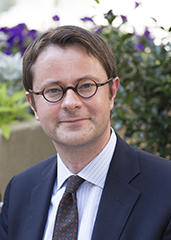Topics
- active learning (18)
- research assignments (6)
- libraries (1)
- literature-based learning (2)
- multimedia (5)
- museums (6)
- object learning (7)
- online learning (5)
- peer instruction (10)
- storytelling (2)
- learning management system (2)
- syllabus design (3)
- teaching empathy (3)
- teaching fellows (1)
- lecture (3)
- learning goals (8)
- assessment (6)
- data (3)
- backward design (3)
- blended approaches (12)
- case-based learning (8)
- classroom contracts (7)
- classrooms and space (3)
- collaborative learning (27)
- community events (1)
- course transformation (7)
- devices (3)
- learning by making (5)
- discussion (24)
- engaged scholarship (4)
- experiential learning (16)
- feedback (18)
- group work (8)
- guest speakers (7)
- interdisciplinary (6)
- leadership (3)
Send feedback
Subscribe
Copyright © 2024 The President and Fellows of Harvard College | Privacy | Accessibility | Digital Accessibility | Report Copyright Infringement

 Tyler VanderWeele, John L. Loeb and Frances Lehman Loeb Professor of Epidemiology, uses lectures to integrate and illuminate core concepts, bringing new insights to students and sometimes for his own scholarship in the process. His courses—on
Tyler VanderWeele, John L. Loeb and Frances Lehman Loeb Professor of Epidemiology, uses lectures to integrate and illuminate core concepts, bringing new insights to students and sometimes for his own scholarship in the process. His courses—on  Paola Arlotta, Professor of Stem Cell and Regenerative Biology, creates an environment of active inquiry, experimentation, and brainstorming by employing interactive lecturing in her course,
Paola Arlotta, Professor of Stem Cell and Regenerative Biology, creates an environment of active inquiry, experimentation, and brainstorming by employing interactive lecturing in her course,  Joshua Greene, Professor of Psychology, designs course sessions for maximum engagement by creating interactive opportunities for undergraduate and graduate students to grapple with problems and challenge one another. “It’s not a puzzle if there are not two competing, compelling arguments. I try to use students’ natural inclinations to achieve my pedagogical purposes—if they’re not at least a little confused, then I’m not doing my job.”
Joshua Greene, Professor of Psychology, designs course sessions for maximum engagement by creating interactive opportunities for undergraduate and graduate students to grapple with problems and challenge one another. “It’s not a puzzle if there are not two competing, compelling arguments. I try to use students’ natural inclinations to achieve my pedagogical purposes—if they’re not at least a little confused, then I’m not doing my job.”